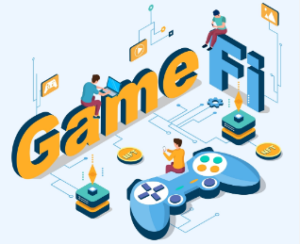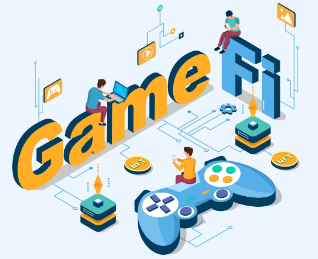DeFi and NFTs: The Changing Faces of Finance
DeFi, or Decentralized Finance, and NFTs are two of the most thrilling trends of today’s digital economy. While DeFi is revolutionizing the look and feel of finance itself-thereby allowing its users to trade, invest, and borrow money without traditional banks-NFTs are opening completely new possibilities for artists, players, and collectors in this decentralized environment.
But all these developments are not just separate phenomena. They all together change how people perceive such ideas as ownership and investment. DeFi and NFTs, using blockchain technology for their functioning, empower people to be in charge of their capital and belongings as never before.
Finance and digital ownership in the future have a very different feel than they ever used to. This blog post examines how the two interact in order to present new possibilities that can be used by users around the world.
Key Takeaways
- DeFi unlocked access to financial services without intermediaries.
- NFTs made ownership experiences creative and unique in the digital space.
- Together, DeFi and NFTs have reimagined investment and asset management.
Decentralized Finance DeFi: Principles and Impact
DeFi is a revolution in the use of financial systems by individuals. It hopes to eliminate intermediaries and make access to financial services easier. This section shall look into what the basic components of DeFi are, how it fares against traditional finance, and any potential it may have to contribute to financial inclusion.
The Pillars of DeFi
DeFi stands on a number of important legs:
Smart Contracts: These are self-executing contracts, with their preliminary nature of terms written into lines of code. By their automation of transactions, they reduce most of the involvement of trusted middlemen.
- Blockchain Technology: It is a technological innovation that records transactions in a way that is secure and transparent. It ensures all the records become immutable and accessible to all parties.
- Decentralized Applications: These are applications that run on a blockchain and offer users a wide range of financial services, such as lending, borrowing, and trading.
All these pillars combined, among others, allow many innovative financial services: decentralized exchanges, lending protocols, to name a few. For users, this means much lower costs, faster settlement, and much greater control over their assets.
DeFi vs Traditional Finance
Some of the key differences between DeFi and traditional finance are as follows:
- Intermediaries: Traditional Finance relies on banks and brokers to intermediate between parties to a transaction. DeFi dispenses with these intermediaries and has two parties transact directly.
- Accessibility: DeFi platforms are digital, and as long as one has access to the internet, anyone can participate in them. Traditional finance requires identification and cuts out any people who do not have bank accounts.
- Transparency: All their transactions take place on the blockchain. Therefore, it builds trust between participants in the DeFi economy. It is pretty much impossible in traditional finance to track things, such as fees or terms, through its usually not-so-transparent processes.
These differences can offer financial services that are more efficient, faster, and cheaper. While the traditional finance industry is highly regulated, DeFi still operates in a less regulated environment. It is this very lack of regulation that caries both risk and reward.
DeFi and Financial Inclusion
Position of DeFi in Financial Inclusion
- Access to the Unbanked: A lot of people do not have access to traditional banking. DeFi extends financial services to these people through smartphones.
- Some of these causes include the following: Lower Costs: Most times, DeFi transaction fees are relatively lower than those at banks. For this reason, financial services become more available for low-income residents.
- Global Reach: DeFi platforms do not have any geographic limitations. They provide equal opportunities to all in participating in the global economy and bridge the gaps between various financial systems.
Thus, in the name of inclusion, DeFi strives to fill a gap left by previous financial institutions and creates possibilities for people and communities which, up until today, have been excluded from traditional finance.
Non-Fungible Tokens and Their Use in Synergy with DeFi
NFTs and DeFi together open completely new horizons of financially related opportunities and digital ownership. The merger of these two technologies enables one to access unique financial tools and benefits.
What Is an NFT?
NFT stands for Non-Fungible Token, a unique digital entity stored on some blockchain. Unlike cryptocurrencies like Bitcoin, all of which are interchangeable and basically have no difference in value from one to another, each NFT has its own distinctive value and identity.
This uniqueness in nature means that NFTs can represent all kinds of items such as art, music, virtual real estate, and collectibles. Each token has metadata that can prove ownership and authenticity.
NFTs have completely altered the perception of value in the digital world. They have finally given power to creators to monetize their work in ways they could not earlier.
NFTs in the DeFi Ecosystem
NFTs have gained a front-runner status in the world of decentralized finance. They can be used as loan collateral, hence enabling holders to borrow money without needing to liquidate their assets. The whole process increases liquidity for the owners of NFTs.
Some DeFi platforms exclusively work with NFT assets, enabling users to stake their tokens in return for rewards. That makes passive income possible while retaining ownership of the original asset.
Moreover, with the NFTs in DeFi, fractional ownership is achievable. In that case, multiple investors can have partial ownership of a highly valued NFT; this, in return, makes high-value assets more accessible.
Use Cases: From Art to Finance
The use cases of NFTs are manifold and across many fields. In the field of art, they offer a solution by which artists can sell digital works to buyers directly while retaining rights.
In gaming, it enables NFTs to let players be the true owners of in-game items that they could buy or sell or trade on secondary markets. This opens an extra revenue stream for gamers.
NFTs find their usage in insurance and real estate within the domain of finance. They will make buying and selling easy by digitizing the contract and records of ownership, hence making it efficient and transparent.
In general, NFTs multiply DeFi through novel ways of interaction with digital assets.

Also Read :
